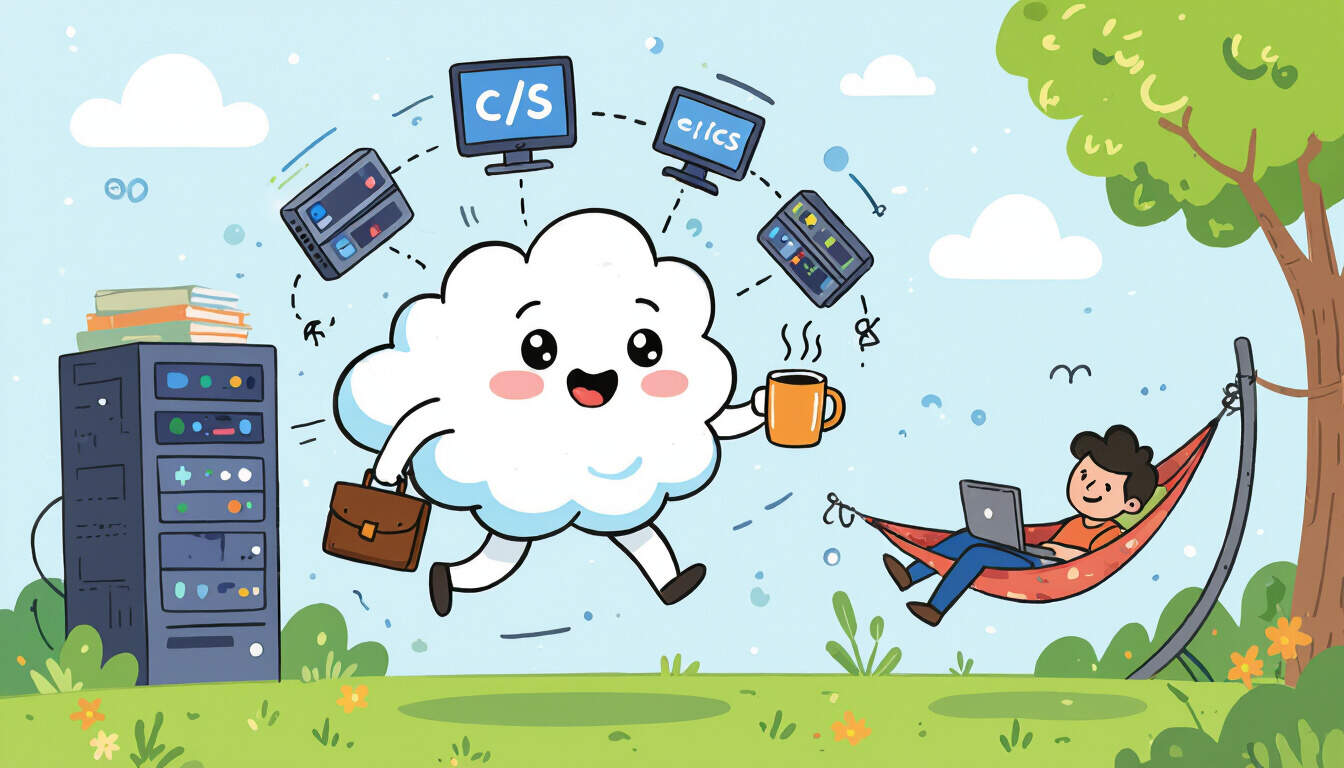IaaS Service Providers and Their Role in Remote Work
 by Thaddeus Blanda
by Thaddeus Blanda
Discover how IaaS service providers support remote work by offering scalable cloud resources that enhance team collaboration and productivity. This article explores key benefits, selection tips, and real-world applications for remote professionals and businesses.

Remote work has transformed how teams operate, and IaaS service providers play a crucial role in this shift. These providers offer essential cloud-based infrastructure that allows remote workers to access powerful computing resources from anywhere. For instance, IaaS enables freelancers to set up virtual servers quickly, ensuring they can handle projects without needing physical hardware.
One major advantage is the flexibility IaaS brings to daily routines. Remote workers often deal with varying workloads, and IaaS allows for easy scaling of resources. This means teams can add more storage or processing power during peak times and reduce it afterward, which helps maintain efficiency. In a remote setting, this adaptability is key for keeping operations smooth.
When considering productivity, IaaS integrates well with various tools. Many remote professionals use software for task management, and IaaS provides the backbone to run these applications reliably. For example, a project manager might rely on cloud storage to share files instantly with team members across different locations. This seamless integration boosts overall output and reduces downtime.
Another aspect is how IaaS supports virtual team collaboration. With remote setups, communication tools are vital, and IaaS offers the infrastructure to host video meetings or shared workspaces. Businesses find that using these services fosters better interaction among employees, even when they are spread out geographically. Remote work thrives on such connectivity, making IaaS an important ally.
Choosing the Right IaaS Provider
Selecting an IaaS provider involves evaluating several factors to ensure it fits your needs. Cost is often a primary concern, as pricing models vary based on usage. Some providers offer pay-as-you-go options, which are ideal for freelancers who want to avoid long-term commitments. Reliability is another factor; look for providers with strong uptime guarantees to prevent disruptions during critical tasks.
Security features are essential in remote environments. IaaS providers typically include options like firewalls and encryption, protecting sensitive data from potential threats. For managers overseeing remote teams, these protections help build trust and ensure compliance with industry standards.
Enhancing Work-Life Balance with IaaS
IaaS can also contribute to better work-life balance. By automating routine tasks, such as backups or updates, workers have more time for personal activities. This automation reduces the mental load, allowing remote employees to disconnect after hours. For businesses, implementing IaaS means employees can work efficiently without being tied to a physical office, promoting healthier routines.
In practice, a freelance designer might use IaaS to run design software in the cloud, accessing it from a laptop or tablet. This setup lets them work from a coffee shop or home, blending professional duties with leisure time effectively. Such flexibility is a hallmark of modern work-life balance.
Real-World Applications
Many organizations have adopted IaaS to streamline their remote operations. For example, startups often use it to launch applications quickly, giving them a competitive edge. In larger companies, IaaS supports data analysis tools that remote teams use for decision-making. These applications demonstrate how IaaS can drive innovation and growth.
Productivity tools benefit greatly from IaaS as well. Email systems, document editors, and collaboration platforms run smoothly on cloud infrastructure, enabling real-time updates. This is particularly useful for virtual teams working on shared projects, where immediate access to files can speed up workflows.
Potential Challenges and Solutions
While IaaS offers many benefits, it is not without challenges. Initial setup might require some technical knowledge, but most providers offer user-friendly interfaces and support resources. Remote workers can overcome this by starting with basic plans and gradually exploring advanced features.
Data management is another area to watch. With IaaS, ensuring proper organization of files and resources is important to avoid confusion in a distributed team. Simple strategies, like regular audits, can help maintain order and efficiency.
The Future of IaaS in Remote Work
As remote work continues to grow, IaaS will likely evolve to meet new demands. Providers are focusing on improving user interfaces and adding more intuitive features. For remote workers and businesses, this means even greater access to tools that enhance productivity and collaboration.
In summary, IaaS service providers are vital for sustaining remote work environments. They deliver the infrastructure needed for efficient operations, better team interactions, and improved personal well-being. By leveraging these services thoughtfully, remote professionals and managers can create more effective and balanced work setups.
